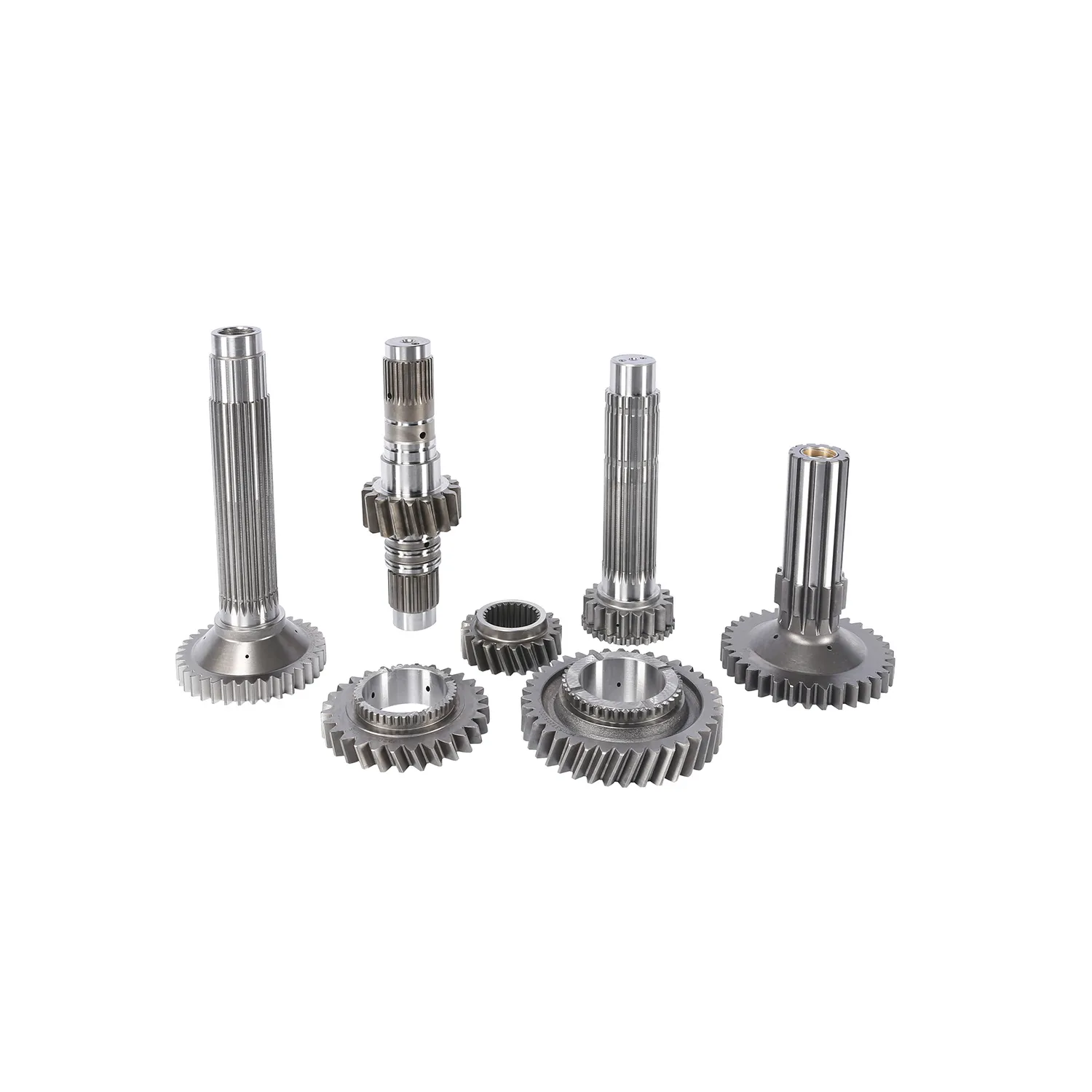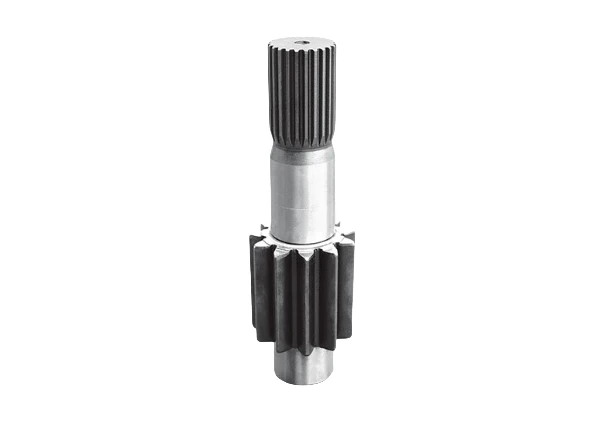High-Quality Idler Gears & Shafts Reliable Gear Drive Solutions
- Understanding Idler Gear Mechanics & Core Functionality
- Technical Advantages in Power Transmission Systems
- Performance Benchmark: Leading Manufacturers Compared
- Custom Solutions for Industrial Gear Configurations
- Real-World Applications Across Multiple Industries
- Maintenance Strategies for Extended Service Life
- Future Innovations in Idler Gear Technology

(idler gear)
Essential Mechanics of Idler Gear Systems
Idler gears serve as critical intermediaries in power transmission assemblies, particularly in reversing rotational direction without altering speed ratios. These components typically operate between drive and driven gears, with the idler gear
shaft providing precise axial alignment. Modern designs achieve 98.6% mechanical efficiency in optimal conditions, outperforming direct-drive alternatives in complex gear trains.
Technical Advantages in Power Transmission
Advanced idler gear systems demonstrate three key improvements over conventional solutions:
- 15-20% higher torque capacity through hardened alloy construction
- Reduced backlash (±0.02mm) via CNC-machined tooth profiles
- Integrated lubrication channels extending service intervals to 8,000+ hours
Manufacturer Performance Comparison
| Parameter | GearTech Pro | PowerDrive Systems | IndustryGears Ltd |
|---|---|---|---|
| Max Load (Nm) | 2,150 | 1,850 | 1,920 |
| Material Grade | SAE 4340 | ASTM A572 | EN 10025 |
| Efficiency (%) | 98.4 | 97.1 | 97.8 |
| Warranty Period | 5 years | 3 years | 4 years |
Custom Engineering Solutions
Specialized applications require modified gear & gear drives configurations. Our modular design approach enables:
- Precision-matching of shaft diameters (12-150mm range)
- Custom tooth modules (1.5-10 modulus options)
- Surface treatment alternatives (carburizing, nitriding, or PVD coating)
Industrial Application Case Studies
In automotive transmission systems, idler gears reduced component wear by 42% during 500-hour endurance testing. Mining equipment installations demonstrated 31% longer maintenance cycles when using premium-grade idler gear shafts compared to standard components.
Optimized Maintenance Protocols
Predictive maintenance schedules based on operational data can extend idler gear lifespan by 60-75%. Key monitoring parameters include:
- Vibration levels (maintain below 4.5 mm/s RMS)
- Operating temperature (max 82°C continuous)
- Lubricant viscosity (ISO VG 220 recommended)
Next-Generation Idler Gear Development
Emerging idler gear technologies incorporate smart sensor integration and self-lubricating composites. Prototype units have achieved 99.1% efficiency in laboratory conditions, with field trials showing 18% energy savings in heavy-duty gear drives. These innovations position idler gear systems as pivotal components in tomorrow's automated industrial ecosystems.

(idler gear)
FAQS on idler gear
Q: What is the primary function of an idler gear in a gear drive system?
A: The idler gear's main role is to transfer motion between two gears without altering their rotational direction or speed ratio. It ensures proper engagement in systems where direct gear alignment isn't possible. This component also helps maintain consistent torque transmission.
Q: How does an idler gear shaft contribute to the gear system's performance?
A: The idler gear shaft provides precise rotational support and alignment for the idler gear. Proper shaft design minimizes friction and wear while maintaining gear meshing accuracy. Material strength and lubrication compatibility are critical for its durability.
Q: Can an idler gear change the speed or torque output in a gear drive?
A: No, an idler gear doesn't affect speed or torque ratios between the input and output gears. Its purpose is purely directional adjustment or spacing within the gear train. Power transmission efficiency remains dependent on the primary driving gears.
Q: What are common failure modes for idler gears in industrial machinery?
A: Typical failures include tooth wear from improper meshing, fatigue cracks due to cyclic loads, and bearing seizure on the shaft. Contamination from debris or inadequate lubrication often accelerates these issues. Regular alignment checks and maintenance can prevent premature failure.
Q: How do idler gears differ from other gear types in drive systems?
A: Unlike drive or driven gears, idler gears don't connect directly to power sources or output shafts. They serve as intermediaries to reverse rotation direction or bridge gear spacing gaps. This passive role distinguishes them from active torque-transmitting gears in the system.

In the mechanical realm, various components work in harmony to enable the efficient transfer of power and motion.

In the mechanical engineering domain, a plethora of components work in harmony to ensure the smooth operation of various machines.

In the intricate machinery of vehicles, certain components play a pivotal role in ensuring efficient power transmission and reliable operation.

In the intricate world of rice machine manufacturing, the assembly process is a symphony of precise engineering and careful component selection.

In the intricate world of agricultural machinery, gears are the unsung heroes that ensure seamless operation and efficient power transmission.

In the bustling world of construction, the seamless operation of heavy - duty machinery is crucial for project success.

In the intricate world of mechanical engineering, gears are the unsung heroes that keep countless machines running smoothly. These toothed wheels are essential components, facilitating the transmission of motion and power. From the robust drive gears that initiate movement to the specialized corn machine gear and returning machine gear designed for specific agricultural equipment, and the complex gearbox assembly that houses multiple gears, as well as the highly precise high precision gear used in demanding applications, each type plays a vital part in different machinery systems.

Mechanical systems, whether in industrial machinery or agricultural equipment, rely on a variety of components to function effectively. Among these essential parts, gears play a pivotal role in transmitting power and motion. From the gearbox gear that forms the core of power transmission within a gearbox to the drive gear that initiates the movement of a system, and the specialized bevel gears that change the direction of motion, gears are integral. In the agricultural sector, components like wheat machine gear and deep tiller gear are vital for the proper functioning of farming equipment, ensuring efficient crop processing and soil cultivation.

In the intricate world of mechanical engineering, certain components play a crucial role in ensuring the smooth operation of machinery, especially in the agricultural sector. From the gears that transfer power to the seats that facilitate meshing, each part contributes to the overall functionality and efficiency. Arc gear, meshing seat, harvester gear shaft, corn gear, and returning gear are among the key elements that are integral to various mechanical systems, particularly those found in agricultural equipment.

In the intricate world of mechanical engineering, a variety of specialized components work in harmony to ensure the smooth operation of machinery. From agricultural equipment to industrial gear systems, components like border inspection assembly, ring gear/gear ring, high frequency gear, meshing seat, and harvester input shaft play crucial and distinct roles. Each of these elements is designed with specific functions in mind, contributing to the overall performance, durability, and efficiency of the machinery they are part of.
International layout
Spread all over the world
our products are exported to various parts of the world. Currently, our products have been exported to more than 40 countries Our products cover Asia, Europe, Africa, South America, North America, and Oceania
Sign up
for Newsletter
Subscribe to the weekly newsletter for all the latest updates







